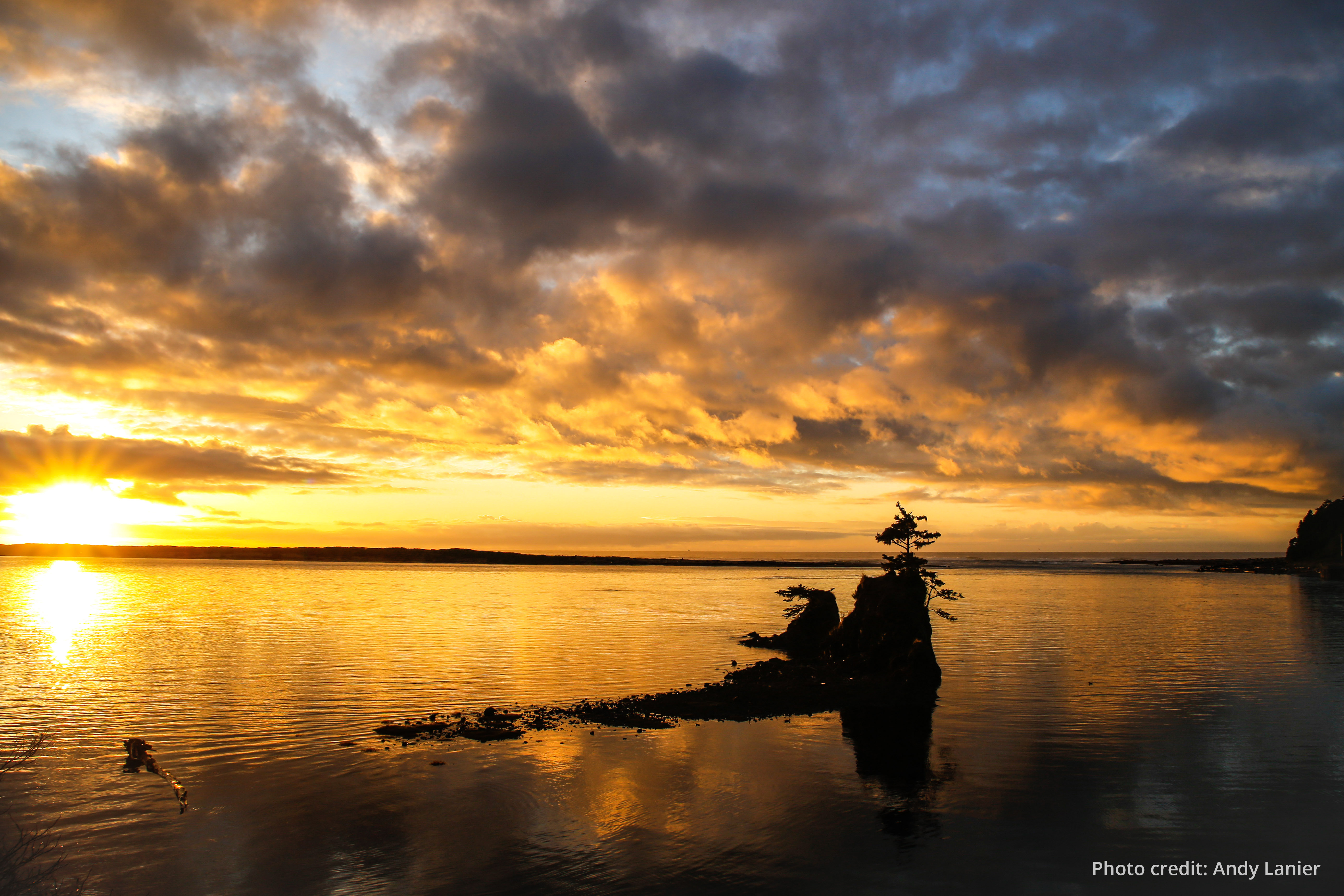States / Oregon
Oregon
Coastal Management
The focus is on managing coastal areas to increase resilience, with an emphasis on balancing environmental, economic, and human wellbeing. Mandated by the Coastal Zone Management Act, the two federal programs designed for this task are the National Coastal Zone Management Program and the National Estuarine Research Reserve System. Programs are administered, on the federal side, by NOAA’s Office for Coastal Management, in partnership with the coastal states.

State Programs
Coastal Zone Management
Oregon Coastal Management Program. Established in 1977, the program is led by the Oregon Department of Land Conservation and Development. To handle Oregon's coastal resources, various federal and state agencies, cities, and counties play a role. Ten state agencies, 33 cities, and seven counties have policies in place to support the program. Additionally, four coastal tribes are essential partners in preserving the natural and cultural heritage of native people on the Oregon coast. The Oregon coastal zone covers coastal watersheds and extends inland to the crest of the coast range, with a few exceptions.
National Estuarine Research Reserves
South Slough National Estuarine Research Reserve. Designated in 1974 and protecting 4,771 acres, the site is located five miles south of Charleston, Oregon, on the South Slough of the Coos Bay estuary. It protects both upland and lowland habitats. The uplands are characterized by steep slopes that support forests and stream systems that supply fresh water to the estuary. The lowlands contain freshwater wetlands and ponds, salt marshes and islands, sand and mud flats, and eelgrass beds. Habitats found within the reserve support salmon and other native fish, herons, bald eagles, migrating waterfowl, elk, river otters, beavers, oysters, and crabs. (See handout)
Impact Stories
Stories that showcase the recent work of this state's coastal management efforts.
- Conservation of the Headwaters of Winchester Tributaries
- Deal/Triangle Property Conservation Acquisition
- Sitka Sedge Tidal Wetland Restoration
- Acquiring Land to Foster Community Resilience in Homer, Alaska’s Bridge Creek Watershed
- Conservation of Chinook Ona Illahee, Yaquina River Estuary
- Visitor Center Updates Incorporate Tribal Knowledge and Accessibility
- Conservation of Cape Foulweather Headland, an Icon of the Central Oregon Coast
- Developing Final Designs for Siuslaw Estuary Tidal Wetlands Restoration
- Reconnecting Floodplains to Reduce Flood Risk in Coastal Communities
- Restoring the Wasson Creek Watershed from Ridgetop to Estuary
- Conserving Tidal Wetlands in the Coquille River
- Conservation of Collins Creek Confluence and Ocean Shoreline
- Enhancing Data Management Capacity among the Columbia River Inter-Tribal Fish Commission, its Four Member Tribes, and the West Coast Ocean Alliance
- Wade into Estuary Recreation at a Research Reserve
- NOAA Strengthens Resilience Before, During, and After Disasters
- Oregon Adds Emergency-Supplies Guide to Disaster Resilience Efforts
- Largest-Ever West Coast Oyster Data Map
- Blue Carbon Enterprises Lessen Climate Change Damage
Additional Resources
*Fast Fact Sources:
People: American Community Survey Five-Year Estimates
Beaches and Estuaries: Shoreline Mileage of the United States
Employment and Economy:
Marine Economy for the Coastal U.S. States
Marine Economy for the U.S. Territories